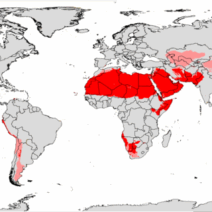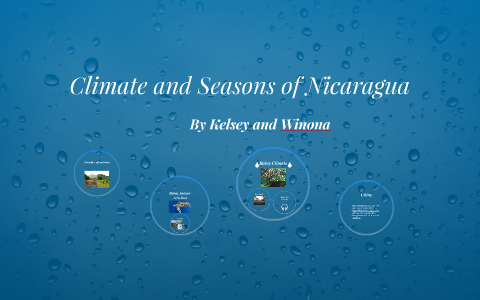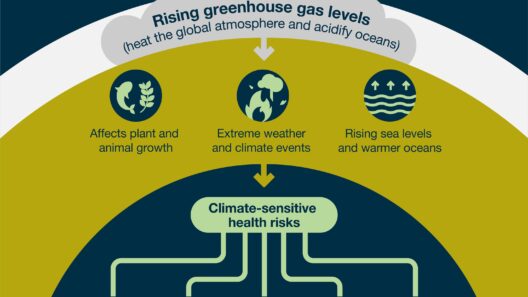Nicaragua, the largest country in Central America, is an intriguing study in the complexities of climate, characterized primarily by its tropical heat and distinct rainy seasons. This nation, rich in natural biodiversity and cultural heritage, experiences a climate that has profound implications for its ecosystems, agriculture, and the daily lives of its inhabitants. Understanding the climate of Nicaragua requires a deep dive into its geographical setting, temperature variations, precipitation patterns, and the overarching climatic phenomena that influence these elements.
The climate of Nicaragua is classified as tropical, corresponding to its geographical latitude, which situates it in the path of the sun for a considerable portion of the year. This means that residents and visitors alike experience consistent warmth, with average temperatures hovering between 77°F (25°C) and 85°F (29°C). However, actual temperatures can vary significantly from the lowland coastal regions to the elevated mountainous areas, where cooler conditions can be prevalent. For instance, cities like León and Managua often experience the sweltering heat typical of tropical climates, while the central highlands, including places like Matagalpa, boast a more temperate weather profile.
In Nicaragua, the year is primarily divided into two seasons: the dry season and the rainy season. The dry season, known as the “Verano,” lasts from approximately November to April. During this period, the country enjoys a relative scarcity of rainfall, leading to extended sunny days and clear skies. The dry season is particularly salient in the Pacific region, where the heat can feel oppressive, and humidity is often low. This period is crucial for agricultural practices, as many farmers take advantage of the drier weather to cultivate crops. Economic activities, including tourism, spike during this time, as visitors flock to the beaches and natural reserves.
Conversely, the rainy season, or “Invierno,” spans from May to October and is marked by intense precipitation events, which can include torrential downpours and occasional thunderstorms. June through September typically represent the peak of this wet season, with the Caribbean coast experiencing the heaviest rainfall. The lush landscapes that characterize Nicaragua during this time are a testament to the vital role of rain in maintaining the country’s diverse ecosystems. While the rains are essential for replenishing groundwater and supporting agriculture, they can also contribute to flooding and landslides, particularly in vulnerable areas.
The interplay between temperature and precipitation gives rise to unique microclimates within Nicaragua. Different regions exhibit distinct climatic characteristics that affect local agriculture and biodiversity. The Pacific lowlands tend to experience hotter temperatures and have a seasonal pattern of drought, which promotes the cultivation of crops such as sorghum and sesame. In contrast, the Caribbean coast, with its more humid and rain-laden climate, supports a variety of crops such as bananas, cacoa, and tropical fruits. Additionally, the elevations in the central highlands provide a more temperate environment conducive to coffee production, which is a significant export for Nicaragua.
Climate change poses a substantial threat to Nicaragua’s environmental stability, exacerbating the natural variances already present in the climactic patterns. Rising global temperatures lead to more severe weather events, including increased frequency and intensity of hurricanes, which can devastate coastal communities and agriculture alike. Additionally, prolonged droughts can disrupt farming cycles, impacting food security and local economies. These changes challenge Nicaragua’s resilience and adaptability, as communities must develop strategies to cope with these emerging climatic realities.
To mitigate the adverse effects of climate change, the Nicaraguan government and various NGOs are actively promoting sustainable agricultural practices and reforestation initiatives. Education around environmental stewardship has become paramount. Communities are galvanized to embrace eco-friendly practices, such as crop rotation, organic farming, and conserving energy and water resources. These efforts not only target climate adaptation but also aim to enhance the overall health of ecosystems that are vital to the nation’s biodiversity.
In conclusion, Nicaragua’s climate is a dynamic interplay of tropical heat and seasonal rains, shaped by geographical and meteoric peculiarities. Understanding its climatic patterns is essential not only for fostering agricultural resilience and promoting economic sustainability but also for grappling with the broader challenges posed by climate change. As the nation navigates the balance between natural beauty and the encroaching realities of environmental transformation, it embodies both the fragility and tenacity of ecosystems in a rapidly changing world.
Awareness and action are critical. A comprehensive understanding of climate variability can empower local communities to better prepare for future challenges while reinforcing the notion that caring for the environment is intrinsically tied to the welfare of the population. Through collaborative efforts, Nicaragua can forge a path toward sustainability, ensuring that both its natural resources and its cultural heritage endure for generations to come.






